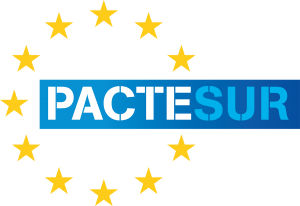Paris, France, May 2021 – When faced with an emergency, local authorities are compelled to provide the public with clarity and direction in an otherwise uncertain and confusing situation. Clear, consistent and effective communication is essential to reassure citizens, not only to inform them of the decisions being taken to tackle the crisis, but also to reduce the social impact of the crisis. To do that, local authorities need specific tools, knowledge and skills. PACTESUR Expert Isabella Abrate discusses the challenges of crisis communication related to public spaces.
When an emergency occurs, the need to communicate is immediate. How can local authorities develop a clear, consistent and effective communication plan?
Isabella Abrate: Communication is a “social process of knowledge-sharing” that allows local authorities to exchange information and reduce its complexity prior, during and after a crisis.
A well-defined communication strategy will not only prepare relevant stakeholders to face an emergency situation, but also build trust among citizens and raise awareness of the risks inherent to the public space. In the long term, awareness will help promote social values and virtuous behaviours, in the end stimulating change (cognitive – approach to issue, in action – how to behave, and values – what we trust and believe in).
In order to ensure a smooth development and to minimise any damage, a crisis communication plan must be drawn up. This plan can be divided into three phases: pre-crisis, crisis response, and post-crisis.
- Pre-crisis (plan & organise): Before a crisis, there is a need to identify and define the objectives (to save lives, to prevent a disaster, to avoid panic) and clarify roles, responsibilities and resources. In a nutshell, it is the process of planning what needs to be done, when, by whom, and with what resources or inputs.
- During the crisis (supervise & manage): When a crisis arises, local authorities need to gather information, carefully verifying facts and figures. The messages should be simple, short and visually clear. They should be repeated/reposted when unofficial information arises. They should be channelled through existing, efficient platforms (social media platforms or specific apps).
- Post-crisis (project & coordinate): In the aftermath of a crisis, a follow-up communication is required. The aim is to develop resilience/trust and restore public confidence. At this stage, local authorities can start drafting an initial assessment of the impact of the crisis: what are the consequences, damage and lessons learned.
How can local authorities ensure a smooth flow of information between local actors and other stakeholders including private operators, before, during and after a crisis?
Before a crisis, it is important to define the tasks and responsibilities. Citizens need to know what to do and where to go. Local authorities must focus on the internal organisation (inward communication) and on information (outward communication) in order to:
- Avoid the spread of unchecked or unclear information in the immediate aftermath of the crisis.
- Select the priorities and urgencies that local actors want to share.
- Select the relevant information and disseminate it as quickly as possible so as to not lose precious time.
- Use only one official social account, platform and channel to disseminate key information. It is important that information can only be added by relevant authorities in order to avoid fake news.
Public communication responses can also fuel negative public behaviours, such as fear, panic or anger. How can local authorities better communicate when an emergency occurs?
An effective public communication response creates clarity, builds resilience and catalyses positive change. Local authorities sometimes lack the capacities to recognise people’s feelings or be empathic – citizens must be reassured and their feelings acknowledged in times of crisis. It is thus essential to develop training for local authorities and operators on the field to better communicate when an emergency occurs. In order to build trust, it is also important that the person who communicates is already known and respected by the public, such as an elected official, the head of police, etc.
During the crisis response phase, there is not enough time to think or focus. This is why communication strategies and emergency procedures must have been defined and shared in the pre-crisis phase. Evacuation procedures ensure that emergency teams can access the public space when an emergency arises. Public communication responses will avoid further confusion and guide civilians to the emergency exits or areas.
How can local authorities improve official communication in emergency and crisis management? Do you have a specific example?
There is a close correlation between “communication” (understood as access, sharing, openness, listening, service) and “citizenship” (participant of the common good). The communication process generates a shared value for all relevant stakeholders, that is value for all the parties involved. In emergency and crisis situations, every stakeholder plays a role. Municipal institutions and the media should cooperate to convey a helpful, constructive message to the public.
I believe communication is an opportunity for participation. Communication means inclusion. It means greater empowerment of the community (not only of the local authorities), enhancement of key resources (knowledge, urban spaces) and collaboration between all the involved levels and people. It leads to proactivity and awareness not only from top to bottom (institutions to public and citizens) but also among citizens themselves.
The use of social media tools in local government crisis communications has changed the landscape of communication in crisis management. In your opinion, what are the main benefits and challenges in the use of social media by local authorities in crisis situations?
There are several challenges. In the event of a power failure or an internet shutdown, local authorities cannot rely on social media to communicate. The language barrier can also be an issue, in particular for tourists. It can also be challenging for older people who are not used to technology or for people who don’t have a smartphone. As social media channels are open to everyone, they can provide helpful information for the suspects. Finally, someone who is in shock, in panic or very frightened might not have the instinct of checking social media or a specific app to seek help.
However, the use of social media also brings opportunities for local authorities. They can deliver immediate detailed real-time information to a huge number of people (if the app is well designed), which is essential when a crisis occurs. They can also signal the danger zone, which can be reassuring for all those who are not near that zone. It is also a very effective tool to reach young people who are heavy users of social media.
A good example is the social media strategy of the Danish Emergency Management Agency (DEMA). PACTESUR Expert Susanne Diemer recently explained that their official Twitter accounthas adopted a specific hashtag: #kriseinfodk (“crisis information Denmark”). DEMA uses Twitter to share key information and recommendations during emergencies and major disruptive events, such as heavy flooding, fire or explosion. They also provide simple, day-to-day recommendations, for example in case of bad weather. To overcome language barriers, they have created a English version for non-Danish speakers.
When the immediacy of response has passed, how can communication help mitigate the consequences of a crisis?
This is what I called the “responsibility stage”, when all the parties involved must cooperate to convey a positive message in a constructive and collaborative way. Post-crisis communication aims to reassure the population regarding the outcomes of the crisis and to take stock of the situation and the way in which the crisis has been managed.
Local authorities are communicating on sensitive and traumatic events, they are providing guidance and support in the face of difficulties, and remaining sensitive to the positive opportunities that life offers, without alienating anyone. They are building social resilience. There is also a culture of responsibility and prevention that must be developed in order to involve citizens in this process. Citizens need to be aware of what the social and organisational complexity requires in case of emergency and to understand that they can have a proactive approach to crisis management.
The opinions expressed in this publication are those of the authors. They do not purport to reflect the opinions or views of Efus. This interview has been edited and condensed for clarity and length.
Footnote
1 An example is the BE-Alert app, an alarm system developed by the Belgium Crisis Centre which allows the government to inform citizens in an emergency situation. Presented during the PACTESUR Local Governance of Liège, the objective of the app is to deliver a uniform and clear message from an official source to quickly reach as many residents as possible: https://www.be-alert.be/en/what-be-alert
2 Diemer, Susanne, How can citizens be better prepared to respond to potential threats in public spaces?, Interview, Publication Series, PACTESUR, November 2020
About the author

Isabella Abrate is a Senior Advisor and Trainer in Safety Communication with 20 years of experience in the communication field on health, safety & security and environmental issues. She is specialised in the development of communication plans, leadership skills, concrete tools and field training. She is also a certified Safety Coach and a certified trainer on D-I-S-C- model based tools for behavioural styles. She has been a member of the PACTESUR Expert Advisory Committee since 2019.
About PACTESUR

The PACTESUR project aims to empower cities and local actors in the field of security of urban public spaces facing threats, such as terrorist attacks. Through a bottom-up approach, the project gathers local decision makers, security forces, urban security experts, urban planners, IT developers, trainers, front-line practitioners, designers and others in order to shape new European local policies to secure public spaces against terrorist attacks.
About the PUBLICATION SERIES

A partner in the PACTESUR project, Efus is publishing a series of articles written by the project’s Associated Cities and Expert Advisory Committee, with the aim of contributing to the European debate on the protection of public spaces against threats. Because the security challenges affecting public spaces are in constant evolution, this collection intends to be a space for reflection and discussion on these issues.
Contact:
Tatiana Morales, Programme Manager: morales@efus.eu
Martí Navarro Regàs, Programme Manager: navarroregas@efus.eu
Marta Pellón Brussosa, Programme Manager: pellonbrussosa@efus.eu




